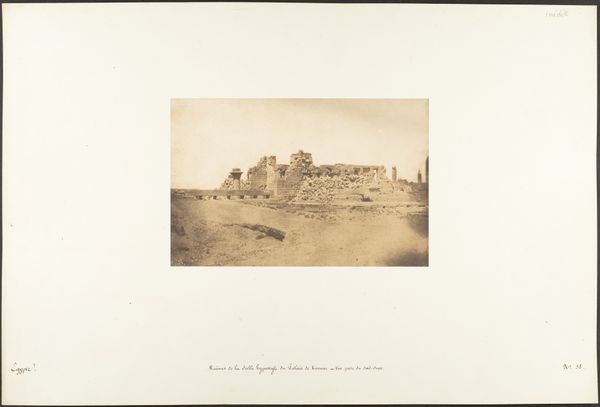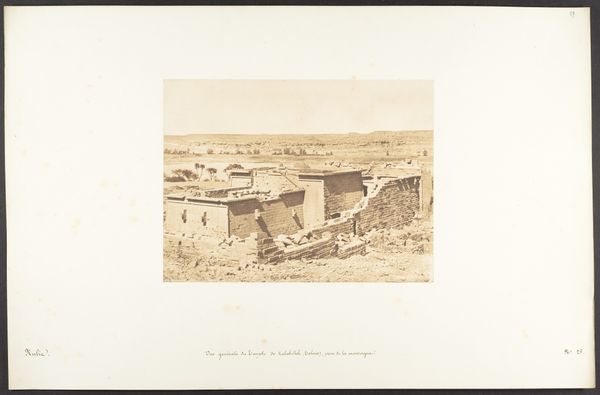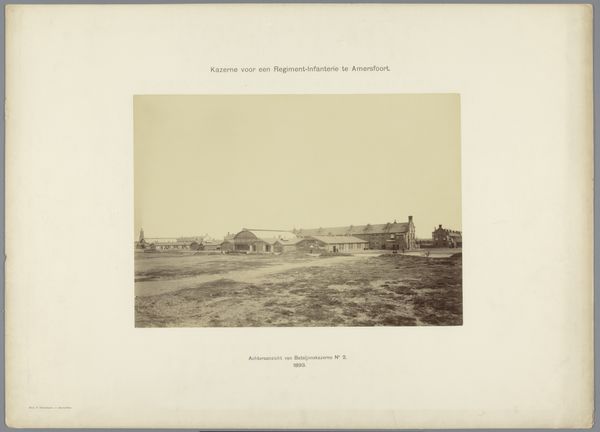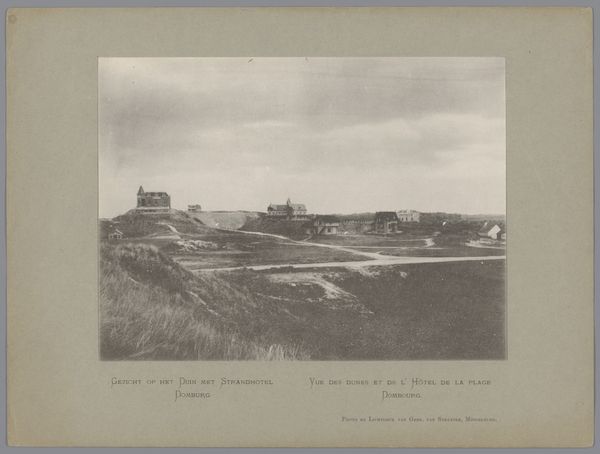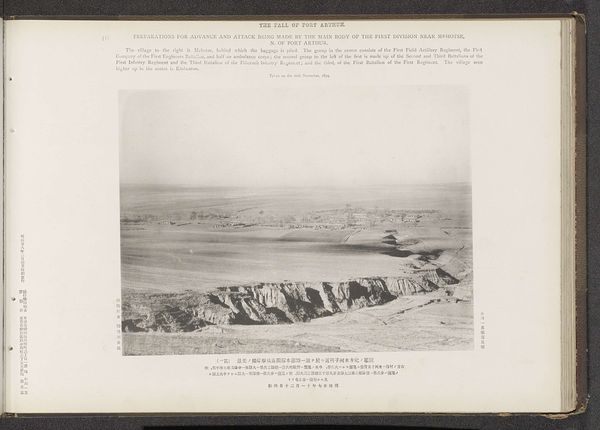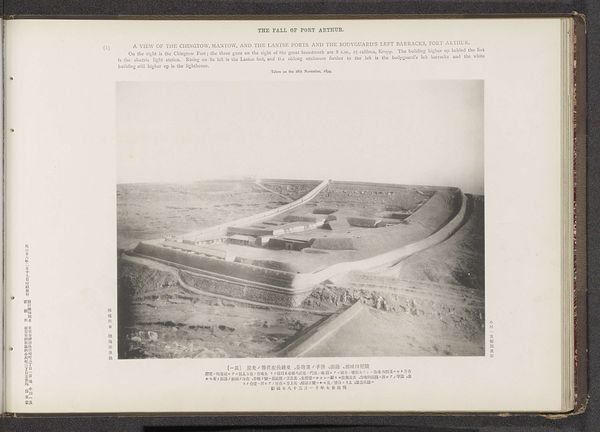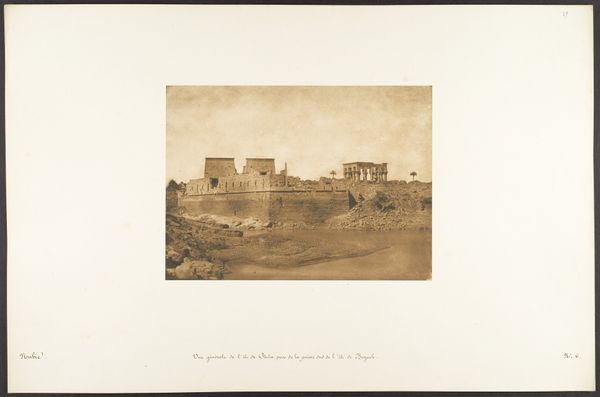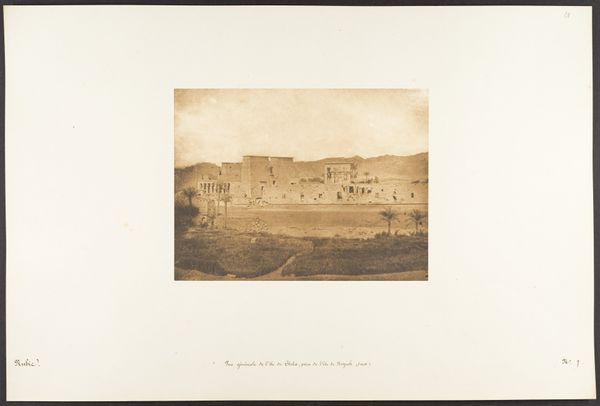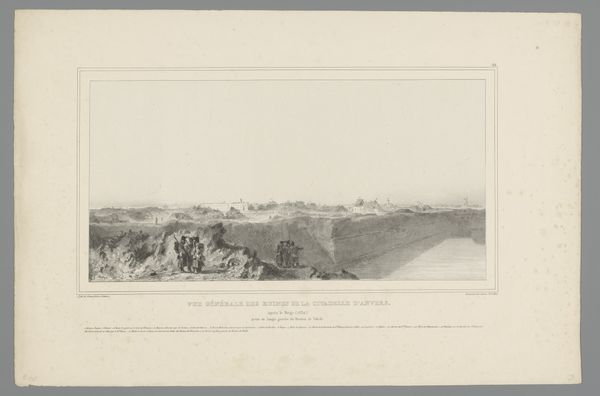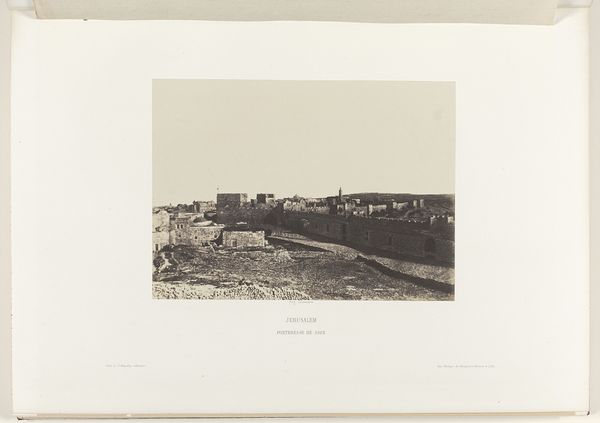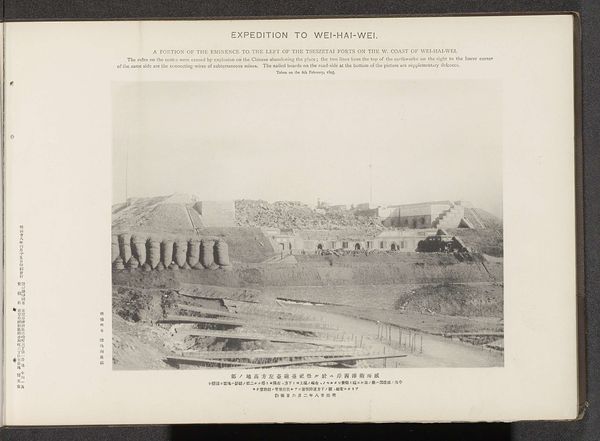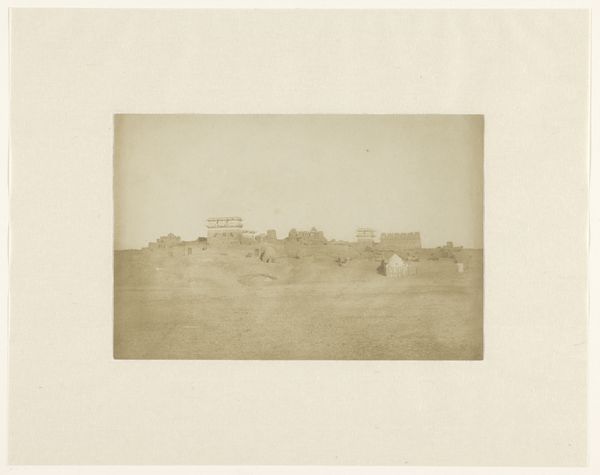
A general view of the King-Tse troops' barracks at Port Arthur Possibly 1894
0:00
0:00
print, photography
# print
#
landscape
#
photography
#
orientalism
#
realism
Dimensions: height 206 mm, width 271 mm
Copyright: Rijks Museum: Open Domain
Curator: Looking at this photograph, purportedly taken in 1894, showing “A general view of the King-Tse troops' barracks at Port Arthur," I'm immediately struck by the palpable stillness and sense of isolation despite the suggestion of military activity. What leaps out to you? Editor: It's quite bleak, isn't it? A stoic grey wash really flattens it out. It reads as a stark representation of the barracks themselves; this forbidding wall seemingly endless, like a monument or marker erected as some kind of symbolic border. Are these stone barriers perhaps reflective of societal divides at that time? Curator: Yes, that defensive wall—that imposing architecture— certainly symbolizes division and perhaps the anxieties of the era. This print is a kind of visual artifact, part of a larger effort to map and document a very tense geopolitical situation. Think about the gaze, the photographer positioning themselves, making decisions to reveal and conceal. Editor: Interesting. And look at the lone figure in the center! Does that draw emphasis on what is physically separating us, viewer and subject? Curator: Exactly! That single, tiny figure actually accentuates the massive scale, it's really more about emphasizing this wall. Think about the repetition of rectangular forms here, how they speak to military structure but also entombment. Perhaps, the artist hints that it would have been futile to scale or somehow transcend these boundaries in those tumultuous times. Editor: Absolutely. The composition is also carefully staged, isn’t it? With the darker foreground leading our eye to the barracks. The almost ethereal quality—likely due to the printing techniques— gives the subject matter the distinct air of a memorial; a haunting elegy rather than documentation. Even this choice gives added historical context. Curator: I couldn't agree more! What starts as seemingly a straightforward record transforms through those aesthetic choices into something far more psychologically charged. And it invites so much introspection from us still today. Editor: Precisely! Leaving us to contemplate walls real and imagined, visible and invisible.
Comments
No comments
Be the first to comment and join the conversation on the ultimate creative platform.
